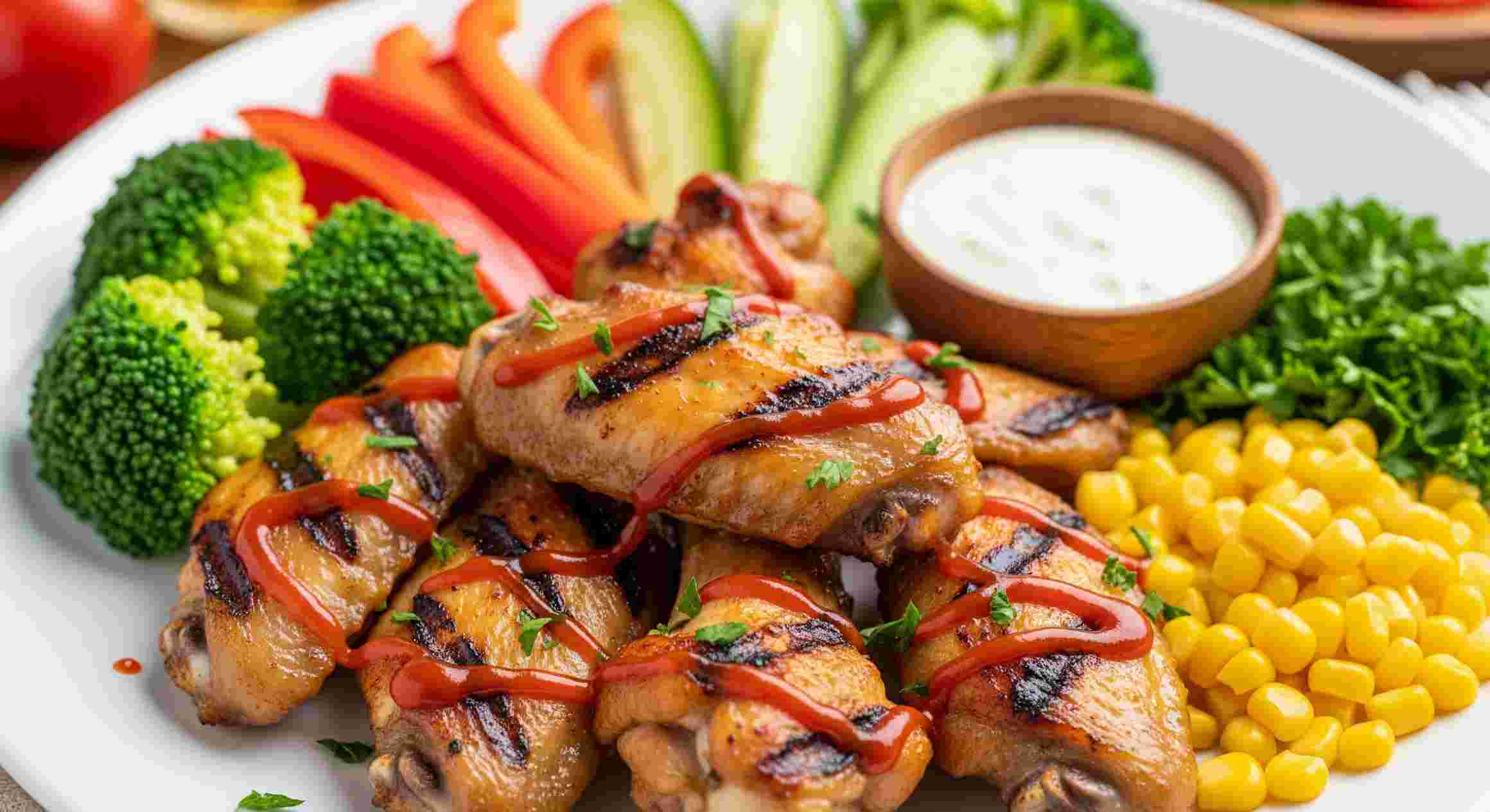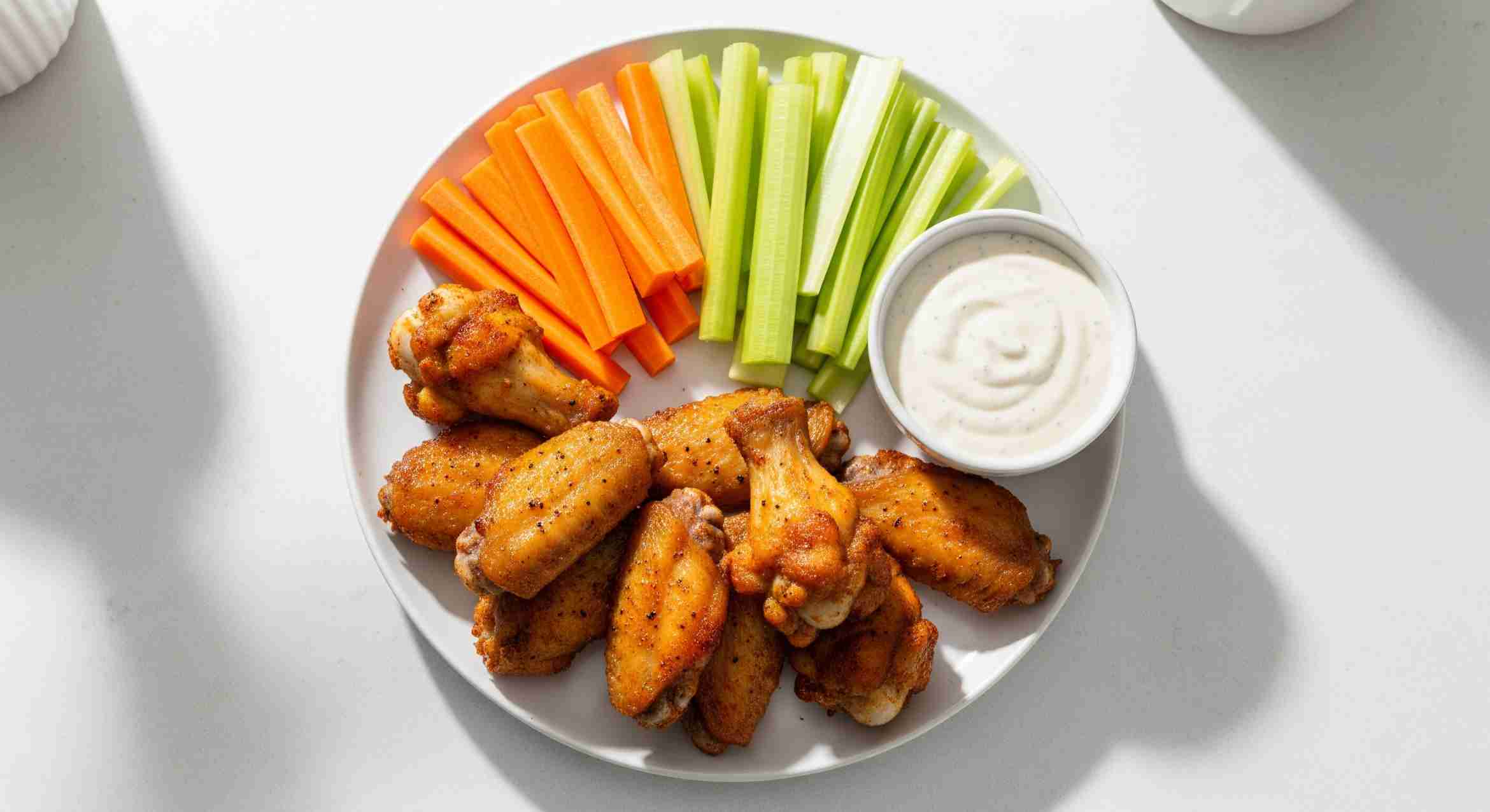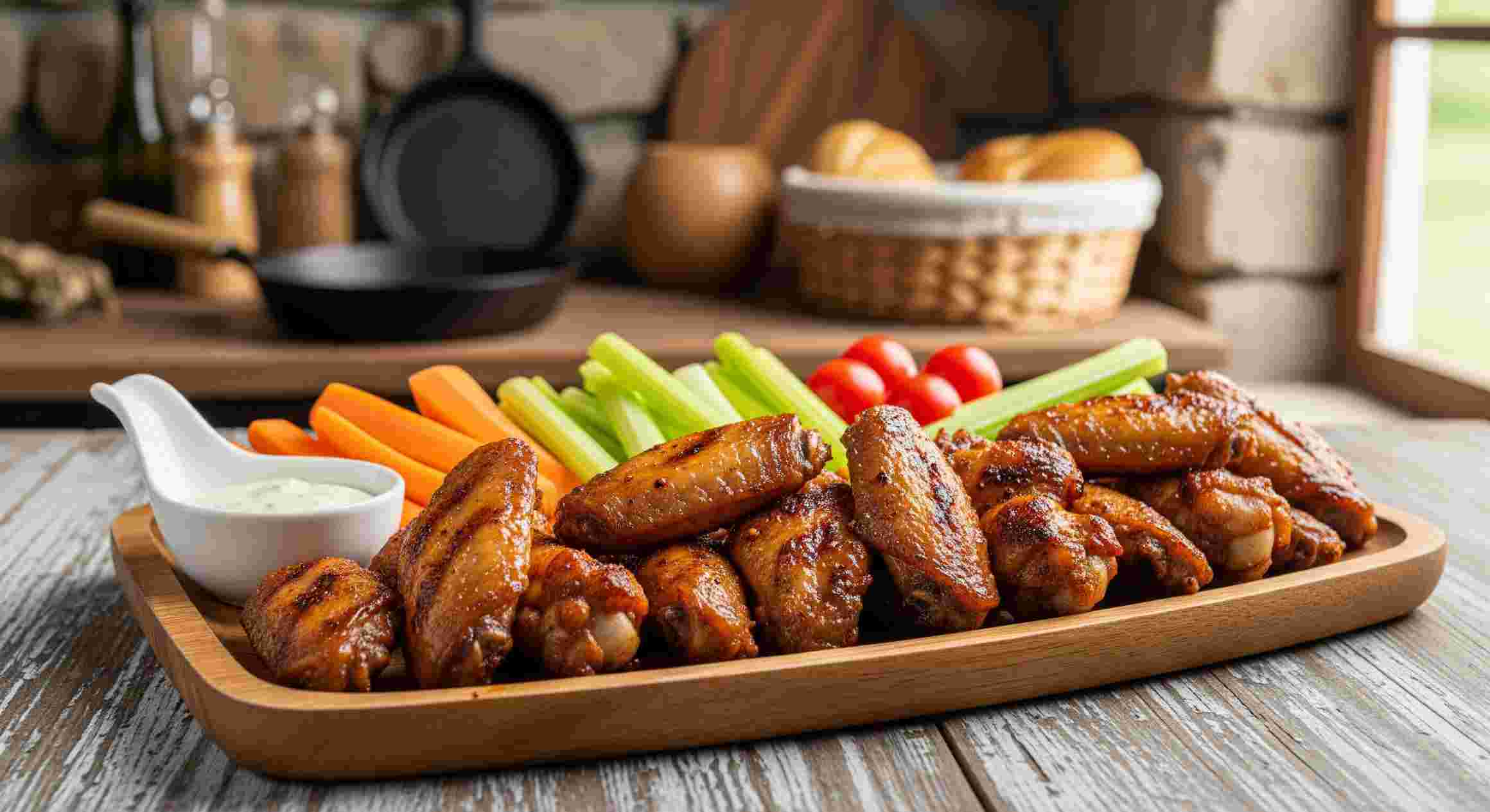
I’ll admit it: I’ve always been that person who orders chicken wings at a restaurant and, for some reason, convinces myself it’s a “healthy choice.” I mean, wings are chicken, right? And chicken is a great source of protein, so I was doing my body a favor, right?
But then I started paying closer attention to what I was actually eating. How much protein was I really getting? Are those crispy wings packed with muscle-building benefits, or just a guilty pleasure? Turns out, there’s a little more to it than I thought.
So, let’s break it down: How much protein in chicken wings really matters, and what you need to know before making wings a regular part of your diet.
How Much Protein Is Actually in Chicken Wings?
The amount of protein in chicken wings depends on the preparation and portion size. On average, a single chicken wing (without breading or deep-frying) contains about 6-7 grams of protein.
This can vary slightly based on whether it’s a wingette (the flat part) or a drumette (the meaty part), but this range holds for most traditional preparations.
Now, this doesn’t sound too bad—until you remember that wings come in packs, and most people eat more than just one. When you throw in a serving of six wings, you’re looking at around 36-42 grams of protein—not too shabby for a snack.
The downside, however, is that wings are often deep-fried and slathered in sauces, which add calories and fat. So while you’re getting protein, it’s not always the lean, nutrient-dense protein you’d find in grilled chicken breast.
Does the Protein Content Change Based on Cooking Method?

Yes, absolutely. The way you cook chicken wings can significantly impact the protein-to-calorie ratio. For example:
- Fried Wings: When wings are deep-fried, they absorb oil, which increases fat content. This method can cause you to lose a bit of the protein efficiency because the calorie count rises, but the protein stays roughly the same.
- Grilled or Baked Wings: If you opt for grilling or baking your wings, the fat content is much lower. These methods preserve the protein content while removing some of the unnecessary added calories.
- Buffalo Wings: These are a popular choice and often cooked by deep-frying, then tossed in a spicy sauce. While they’re delicious, the sauce and frying process can increase the total calories without adding much protein.
The key takeaway here? If you’re looking to maximize protein while minimizing extra fat, grilling or baking wings is the way to go. Frying them won’t drastically change the protein but adds unnecessary calories.
How Much Protein Should You Aim for in a Meal?
Now, you might be thinking, “If I can get 36 grams of protein from six wings, why not just eat a big plate of them?”
Here’s the thing: protein needs vary from person to person. Generally speaking, active adults should aim for 0.6 to 1 gram of protein per pound of body weight. If you’re around 150 pounds, that means you should be getting around 90–150 grams of protein per day, depending on your activity level and goals.
For most people, a serving of chicken wings can be part of a meal, but it shouldn’t be the entire meal. Pairing those wings with a veggie or a healthy carb will round out the meal. So, even if wings are an excellent source of protein, make sure you’re getting the other nutrients your body needs to stay balanced.
How to Make Chicken Wings a Protein-Packed Meal

If you’re looking to make chicken wings a more protein-efficient choice, here are some tips:
Step 1: Choose a Leaner Cooking Method
Grilling, baking, or air frying your wings will give you the protein without all the extra oil.
Step 2: Add Some Vegetables
Pair your wings with veggies like carrots, celery, or a green salad to balance out your meal and add fiber. This keeps you full without adding unnecessary calories.
Step 3: Be Mindful of Sauces
Barbecue, ranch, and blue cheese dressings can add a lot of extra calories and fat. Stick with lighter sauces like hot sauce or make your own using Greek yogurt as a base.
Step 4: Portion Control
Wings are delicious, but they’re easy to overeat. Stick to 6–8 wings per serving and round out the meal with some lean protein (like a side of grilled chicken or tofu) and complex carbs.
By thinking of wings as part of a balanced meal and not the whole meal, you’ll get the most out of their protein content without overdoing it on the unhealthy side.
FAQs About Protein in Chicken Wings
How many calories are in a serving of chicken wings?
A serving of six plain chicken wings contains roughly 400-500 calories (depending on size and cooking method). If you add sauces or fry them, that number will go up.
Are boneless wings healthier than bone-in wings?
Boneless wings are often breaded and deep-fried, which can add more calories than traditional bone-in wings. However, boneless wings may be lower in fat if grilled instead of fried. Always check how they’re prepared!
Can I eat chicken wings if I’m trying to lose weight?
Yes, but keep portions in check and opt for grilled or baked wings instead of fried. Pair them with veggies and use lighter sauces to keep the meal balanced and satisfying without overloading on calories.
Are there other high-protein foods in wings besides chicken?
Yes! You can also get high-quality protein from turkey wings or even plant-based alternatives like tempeh “wings.” If you want a different flavor profile, these options provide similar protein content.
The Bottom Line: Protein, Flavor, and Balance
So, how much protein in chicken wings? The amount is solid—about 6-7 grams per wing, but the real trick is to pair your wings with balanced sides and the right cooking methods.
As with any food, it’s all about moderation. Wings can definitely fit into a protein-packed diet when treated as part of a larger, well-rounded meal.
For me, the best way to enjoy wings is guilt-free. Grill, bake, or air fry them, and add in some greens to get the most out of your meal.
That way, you get the protein, the flavor, and the fuel without the extra fat or calories. Enjoy the process, not just the food—and you’ll always feel good about it.


